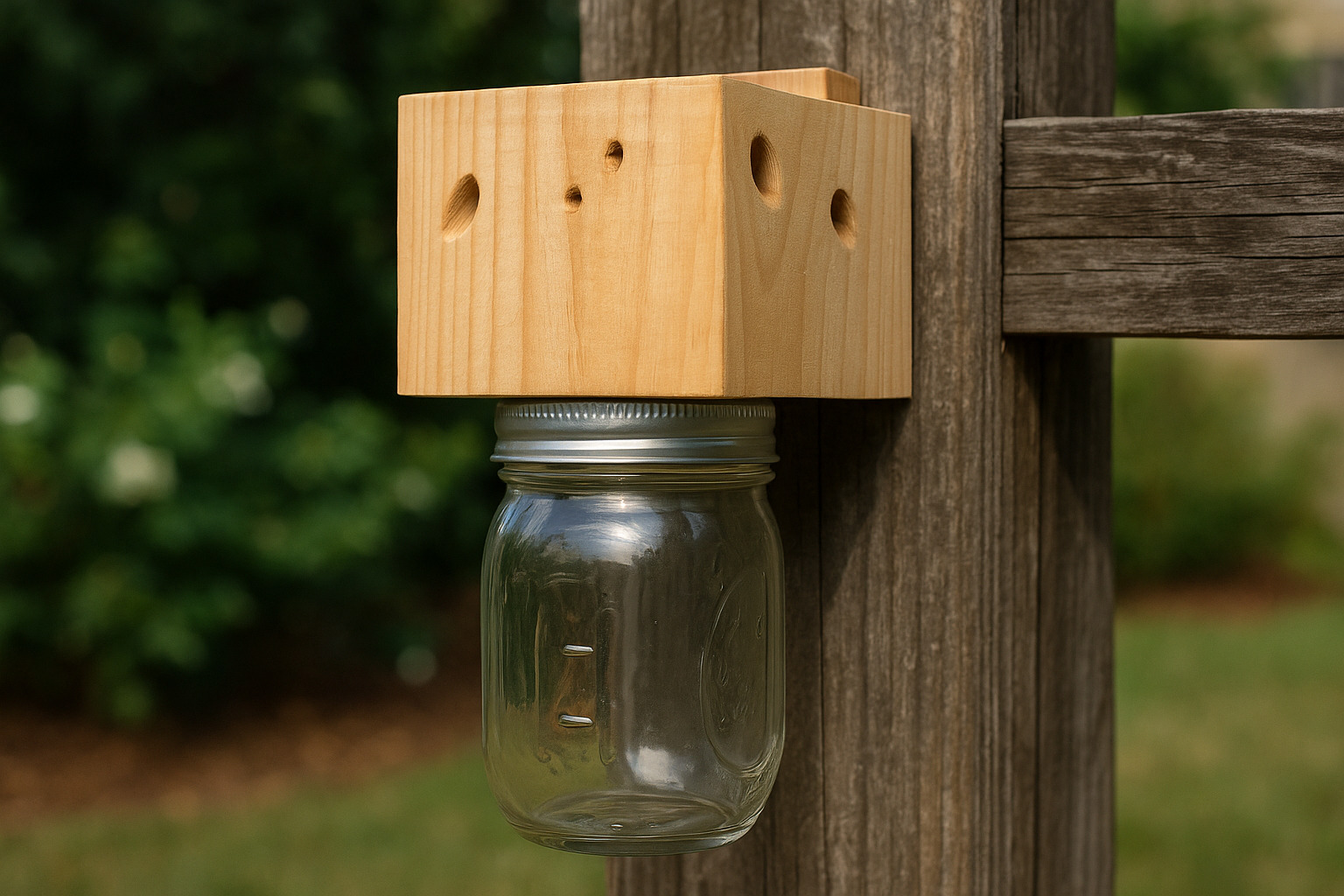Carpenter bees can damage wooden structures by drilling holes to create their nests. A well-built trap can help control their population effectively without using harmful chemicals. This guide explains how to build a functional trap and why it works.
Materials Needed
- A solid block of untreated wood, preferably 4×4 or larger
- A mason jar or plastic bottle with a wide mouth
- Screws for securing the jar
- Wood screws for assembly
- A saw and drill with a ½-inch drill bit
- Measuring tape or ruler
Why This Design Works
Carpenter bees prefer to bore into wood with existing openings. The angled holes in the trap mimic natural nesting sites. Once inside, the bees follow the tunnels and eventually fall into the jar, where they cannot escape.
Step-by-Step Instructions
1. Prepare the Wooden Block
- Cut the wood to about 6–8 inches in length.
- Smooth the edges but avoid painting or treating the wood, as carpenter bees are drawn to natural surfaces.
2. Drill Entry Holes
- Drill three or four angled holes into the sides of the block at approximately 45 degrees.
- Ensure each hole stops short of the center, creating a tunnel effect.
- Space the holes evenly on all sides to increase capture chances.
3. Create the Exit Hole
- Drill a vertical hole through the bottom center of the block to connect with the angled tunnels.
- This hole should lead directly into the jar or bottle.
4. Attach the Jar
- Secure the mason jar or plastic bottle to the bottom of the block using screws or a jar lid attachment.
- Ensure it is airtight to prevent bees from escaping.
5. Mount the Trap
- Place the trap in an area with visible carpenter bee activity.
- Attach it to an overhang, fence post, or wooden structure about 6–10 feet above ground level.
Tips for Better Results
- Position traps near old nesting sites to attract more bees.
- Avoid placing traps near areas where you do not want bee activity.
- Inspect regularly and empty the jar when it fills with bees.
- Replace the jar if condensation builds up, as moisture can reduce effectiveness.
Maintenance and Long-Term Use
- Clean the jar after every use to keep the trap efficient.
- Re-drill or widen holes if they become clogged with debris.
- Store the trap during colder months and reinstall before bee activity resumes in spring.
Additional Preventive Measures
- Fill and seal old carpenter bee holes with wood putty or caulk.
- Paint or stain wood surfaces, as bees avoid treated or finished wood.
- Consider placing multiple traps in large wooden areas to increase effectiveness.




